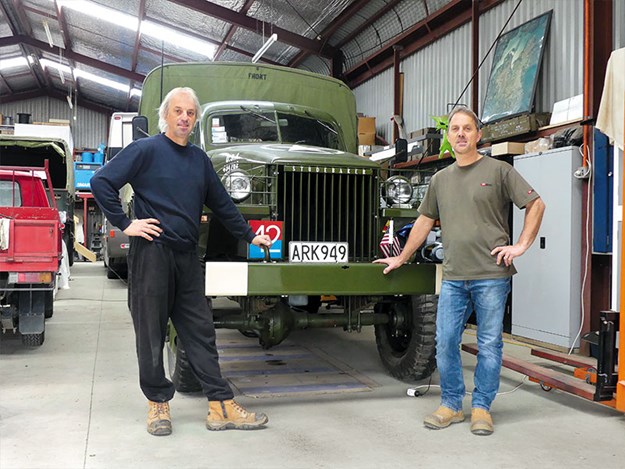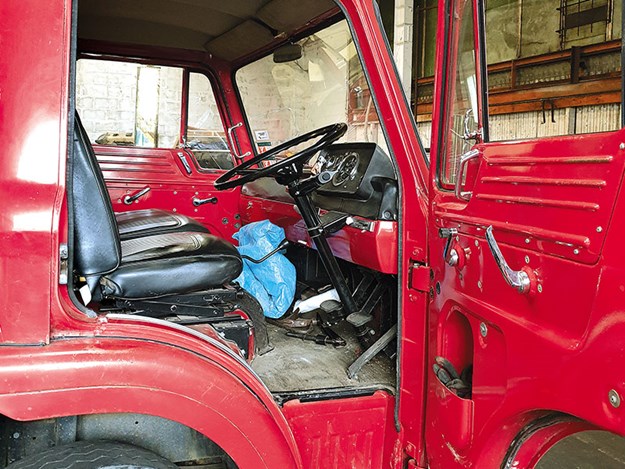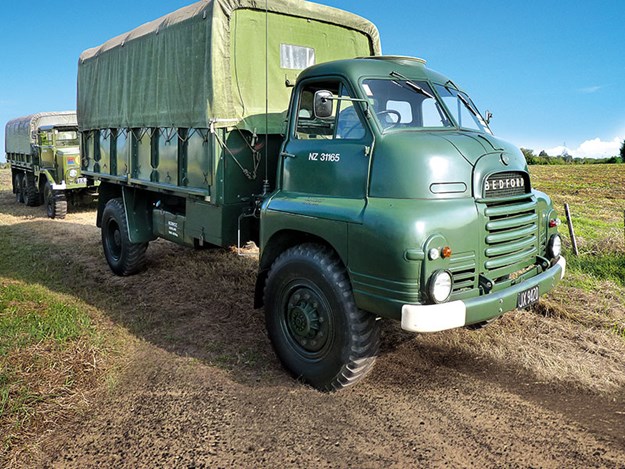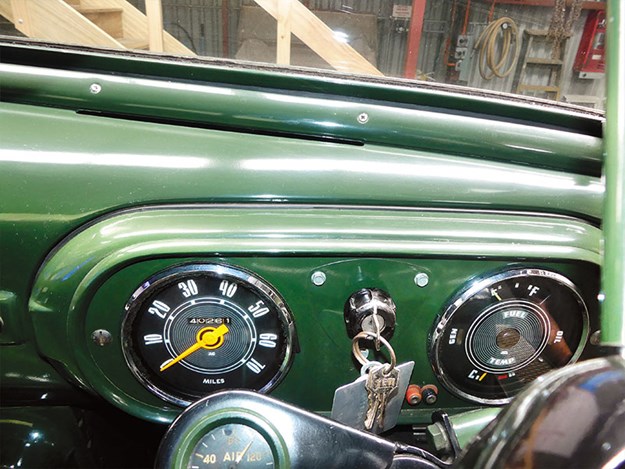Cover story: Treasure trove of classics—Part 1
Tucked away in a shed as immaculately presented as the vehicles that are housed there is a treasure trove of classic vehicles
If you’re into military vehicles, then read on, because there’s absolutely certain to be something to pique your interest over the next couple of issues.
 |
|
Allan and Kevin Huljich with their late father’s prized 1942 Studebaker
|
The collection has been accumulated over many decades of loving care and attention by the late Nick Huljich and is currently under the stewardship of Nick’s two sons Kevin and Allan.
Speak to either one of the brothers, and they’ll tell you in no uncertain terms that they’re not in reality the owners of the collection but merely the artefact’s caretakers, with Kevin expanding on the philosophy by saying, "you don’t own the vehicles, they own you".
D-Series Ford
 |
|
The D Series Ford that inspired this article
|
While the military vehicles in the collection were originally going to be the main subject in this article, the story indeed may have not been told if it wasn’t for a non-military vehicle from the Huljich collection that was spotted out on the streets of Auckland a month or two ago.
The vehicle in question is perhaps the best original D Series Ford still on the road in this country; it even sports the original paintwork and signwriting.
Taking that comment a step further, the seats, headlining and even the floor mats are all original, and as far as Kevin is aware the motor and transmission have never had anything major go wrong with them in the truck’s near-to 50-year life.
Kevin says that his father purchased the truck new as a cab and chassis in 1973 and being the owner of his own joinery factory, he drove the truck directly to his workshop and proceeded to build the wooden tipper body on the back.
Whether it was Nick who carried out the engineering side of the bodywork, such as fitting the PTO- operated pump and single ram underbody hoist, or it was a local engineer who did the work, is unknown.
 |
|
Original, right down to the floor mats and headlining
|
"We wish we’d been more inquisitive and asked more questions of our dad when we were younger" say the lads.
Nevertheless, and regardless of who carried out the work nearly 50 years ago, the two brothers have a very well-preserved original truck that’s still capable of carrying a load, not to mention being able to tip it off rather than having to do the job by shovel.
Rumour has it that there’s about to be another D Series hitting the highways and byways in a few months’ time, and when this happens, it along with the Huljich D will join an orange and yellow D recently seen on the Southern Motorway and yet another one still working as a road sweeper in New Plymouth.
Writer’s note: When it was introduced in 1965, the D Series with its tilt cab was way ahead of its time in design when compared to its predecessor, the Thames Trader, along with its GM rival the TK Bedford and the TK’s predecessor, the S Bedford.
Although over time, Rootes’ Group’s Commer and all Japanese manufacturers continually made minor improvements to the method of tilting the cab, the general appearance of a D isn’t all that dissimilar to most of the mid-range trucks we see on our roads more than half a century after the D’s introduction in 1965.
RLC Bedford troop carrier
 |
|
Out in the field doing what it does best—towing things
|
In speaking of Thames Trader’s and S Bedford’s, the Huljich collection can provide a visual example of how far advanced the D Series Ford was for its time, when it’s parked beside their father Nick’s 1987 restoration, a NZ Army 1965 RLC Bedford troop carrier.
Admittedly, although the 4x4 R Bedford and its 4x2 counterpart the S had long been superseded by the MK and TK models respectively, the fact remains that the NZ Army took delivery of this particular - by now old-fashioned - truck at a time when much newer cab designs were coming on the market.
It’s hardly surprising the RLC looks a little antiquated, as these vehicles were introduced in Britain and shortly after in New Zealand way back in 1953. Despite this, the NZ Army was still putting them to everyday use up until the late 1970s and even the early 80s when they were being replaced with the Mercedes Benz Unimog.
The Huljich truck has been shed stored since its restoration in 1987, so perhaps is the tidiest example currently in existence, however as it doesn’t get a lot of use these days the truck is ready to be moved on to someone who’ll give it the use it deserves to be given.
The six-cylinder 300 cu inch 110-ish bhp (the actual bhp varies depending where you get your information from) engine runs like a sewing machine, although you’re not likely to get a speeding ticket on the motorway, as 90km/h is pretty much out of the question because of the R’s low gearing, however despite this fact, the speedo with the orange pointer fitted to the later models suggests the possibility of 70mph (112km/h), a speed which seemed to be easily achieved by the SB3 tour bus configuration, most of which were fitted with an Eaton two-speed diff.
 |
|
Later model S and R Bedfords had a speedometer that read 70mph and had an orange pointer. Really flash, eh!
|
All the old RLC needs is a polish to make it look like it’s come right out of the box, and it sports a whole lot of cool features as well, items like an onboard compressor, a device that’d come in handy when re-inflating those huge 1100x20 balloon tyres after driving on sand.
There’s also a spot set aside between the driver’s and passenger seats to secure two rifles – ideal for the hunting trip.
One of the perks of writing for a truck and machinery magazine was taken advantage of when the boys said, "take the Bedford for a drive around the block". It was a distance of a couple of kilometres, and it gave the old truck plenty of opportunities to give off a few rattles, squeaks and groans.
Surprisingly, there were none of any consequence, it was like driving a new truck minus power steering and lack of a huge top speed. Despite the lack of power assistance in the steering department, the Beddy steered relatively easily at low speed, the four-speed synchro box changed smoothly.
Kevin told DOW that his father was meticulous when carrying out his many restorations, saying that every component that went back on each vehicle had to be exactly as it was when the machine was new, right down to the cap-sizes and the threads on each nut and bolt.
Whoever winds-up owning the RLC Bedford will be well supplied with enough carefully labelled spares to half-fill the back of the old troop carrier when they drive it away as well.
Parked in the shed alongside the RLC on the day of the DOW visit, was a 1942 Studebaker US6-62 6x6 troop carrier. But more to follow about this doozy, along with a lot of other unique vehicles in the Huljich collection in Part 2 next month.
Find new and used trucks for sale in NZ
Keep up to date in the industry by signing up to Deals on Wheels' free newsletter or liking us on Facebook.





.jpg)


.jpg)

.gif)
.jpg)
.jpg)
.jpg)
.jpg)
